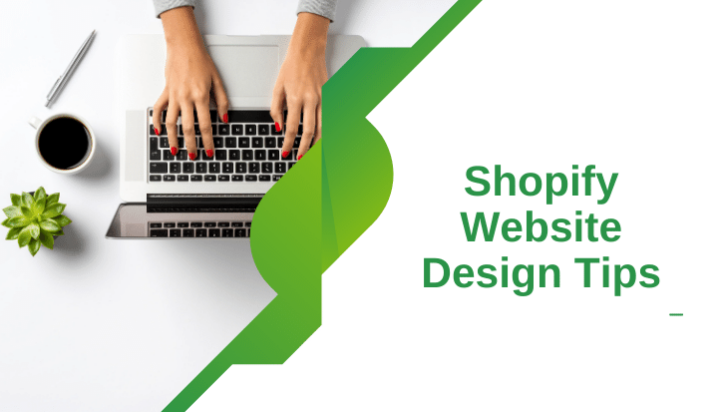
13 Shopify Website Design Tips to Create an Elegant Website
In today’s age of information overload, great web design matters.
While the functionality of a website is a top priority, a visually appealing and user-friendly website is equally important and shouldn’t be overlooked.
The truth is, first impressions can make or break your business and 94% of first impressions are related to design. A high-converting website is what makes users more likely to stick around and take action without going into decision paralysis. On the contrary, a poorly designed website can lead to a big bounce rate!
Hence following the best practices for website design is the key to creating a website that drives better results while achieving a maximum conversion rate.
Best Shopify website design tips to help you get started
Compared to other big names in ecommerce, Shopify ranks highly. And if you are planning to use a platform like Shopify to build your ecommerce site, get the best design tips to see some real results coming in. In order to gain more traction, the first look of your Shopify store must include everything from the right layout to colour to images to words.
Here we’ve put together a list of some of the proven best practices you can consider when designing your Shopify site.
1. Turn it simple and easy for customers to browse and buy
Don’t overload your site with too much information so that your customers can focus on what matters, and those are your products. It comes with no doubt that users find websites with simple designs more appealing.
When the majority of visitors spend less than 15 seconds on a page, the window of time to keep their attention is really short. From a clear and concise navigation bar at the top to easy-to-use search functions, ensure everything allows customers to narrow down their search results.
2. Pick a theme that doesn’t just fit the eyes
From free to paid, there are a lot of Shopify themes to choose from. You can even select a theme from third-party developers. Don’t just jump into one that fits your eyes or looks modern, sleek and attractive. Themes come with different styles and layout options to design and structure your web pages. So, you have to understand the essential technical details to choose the best Shopify theme for your new store.
3. Give some thought to the functionality you will need
Before diving into browsing themes, identify the essential features and functions your store need and make a checklist. It can be a mega-navigation menu, integrated Instagram feed, multi-column drop-down menus, image zoom tool or frontpage slideshow. By knowing what you need prior, head on over to the Shopify theme store. Then review and shortlist the themes that offer your desired features.
4. Select one that aligns with your niche
Consider the vibe of the theme as each of them deliver different main font or colour palette. You have to make sure that these represent the essence of your product.
Ask yourself some questions like,
- What is your industry?
- What is the general vibe of your store?
- How do you want your store to represent?
Suppose, if you are selling children’s clothing, go for a theme that is colourful and soft, rather than a rugged and edgy one.
5. Consider your catalogue size and product images
Find a theme that supports the size of your product catalogue as it will help you to manage and display your product pages properly. Suppose, if your business deals with women’s apparel, you might need a theme that offers features like search and feature functionality, sub-category pages and filter options for easy browsing.
Think about the images you are planning on using in the hero, banner or carousel areas. Also, consider the number of products you will sell as a limited catalogue of 10 to 20 products require simpler navigation than a store with 100 or more products.
6. Check responsiveness
Keep looking for a theme that is responsive to mobile devices. The design and layout should be as consistent as possible and make it easy to see photos, read descriptions or make a purchase. You can preview how the theme would appear on mobile devices.
Check whether the CTAs and navigation menus are easy to use, and whether the elements are properly spaced or not. Look at how much space the images are taking.
7. Prioritise your homepage
A homepage serves as the primary entrance of the product, services and offers that a business offers. It is considered a tremendously effective landing page as it can directly influence the purchasing decisions of the customers. A homepage is what establishes who you are, what makes your business unique and what sets you apart from others.
8. Integrate your branding
The logo, fonts, visuals and tagline should stay on-brand and be aligned with the products and services you offer. Make sure your logo and tagline are displayed prominently on your homepage. Integrate your brand’s colour palette into the design and use them consistently. Clearly express your company’s purpose and values.
9. Use a simplified navigation
The store navigation is something that should be carefully considered. Create a menu including a link to your products, blog and about us page so that visitors can easily explore your site. Consider adding all the top visited categories including the search bar, subscriptions, top sellers, and announcement bar to make navigation straightforward, especially for new visitors.
10. Add an eye-catching banner image
A banner is what allows visitors to understand what to expect from your website and your overall brand values. More than text-based information, a banner photo can communicate much more quickly. Using basic images or purely product mock-ups will not help you in making a strong first impression.
So, invest in bespoke imagery and do a professional photoshoot of your real products. And include a prominent CTA and descriptive headline as well.
11. Improve loading times
Page load time is important in website design. Optimising your page load time will help users get where they’re going faster. Research shows that when loading times increase from even two to three seconds, the probability of bounce raises much higher.
So, in order to reduce loading times, try to avoid third-party themes, reduce your redirects, eliminate non-essential widgets and reduce the size of high-quality product images.
12. Use compelling visuals
In order to catch the eye of visitors, high-quality photos, animations, and videos are essential in providing the visual stimulation that increases customer engagement. So, try to use real-life photos, create videos to educate visitors and infographics to boost communications.
For example, you can add customer testimonials containing messages from existing customers or go for basic explainer videos to educate users about how to use the products and make the most of their application. Or use infographics to break complex topics into easily consumed visual content.
13. Hire the professional Shopify developer
If you find the site designing task as a skill that’s beyond you, simply hire a Shopify web designer to help in designing your high-converting Shopify website. The experience of a professional will lead you to several new insights.
Not just they will assist you in creating a useful and competent website, they are skilled at launching and maintaining as well. So, alongside the quality work, you can ensure improved customer experience and continuous technical advice as well.
Conclusion
Overall, designing a Shopify store that looks and feels just right can be challenging. But it can be a truly fulfilling experience with the right rules of thumb and a little digging. Here we’ve gone over some proven tips to improve your Shopify website. So, if you are new to Shopify and want to start, without further ado, try on implementing the mentioned tactics.
You read a lot. We like that
Want to take your online business to the next level? Get the tips and insights that matter.

